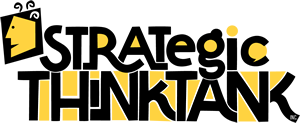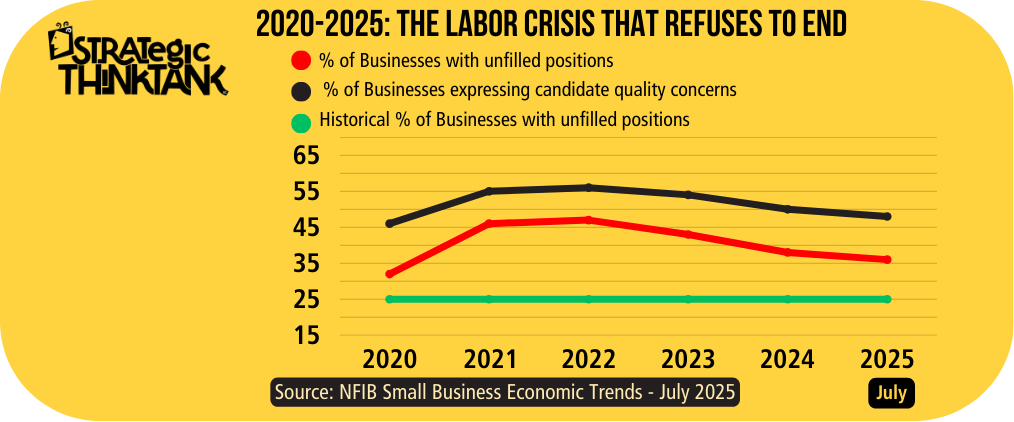The small business labor shortage has evolved from a pandemic disruption into a structural challenge that shows no signs of resolution. NFIB data from 2020 through 2025 reveals a persistent dual crisis affecting small business hiring nationwide.
The Dual Nature of the Crisis
Small business owners face two interconnected problems that have persisted for over five years. This past July, 36% of businesses reported having job openings they cannot fill, representing levels 44% above the historical average of 25%. Simultaneously, 48% of businesses report having few or no qualified applicants for their open positions.
This isn’t simply about worker availability. The data shows that even when applicants exist, nearly half of businesses find them inadequately qualified. During the peak crisis years of 2021-2022, the percentage of businesses with unfilled positions reached 46-47% while qualified applicant shortages affected 55-56% of businesses.
The Structural Nature of the Problem
The persistence of both metrics suggests this small business labor shortage reflects deeper structural changes in the workforce rather than a temporary disruption. Both job opening rates and qualified applicant shortages have remained consistently elevated throughout the five years, with no clear trajectory toward historical norms.
The data shows that July 2025 levels, while improved from peak crisis years, still represent significant departures from pre-2020 baselines. This indicates that the labor market disruptions that began in 2020 have not resolved despite economic recovery in other sectors.
The combination of widespread unfilled positions and persistent applicant quality concerns suggests small businesses face challenges that extend beyond traditional supply and demand dynamics in the labor market.
What Can Be Done?
How might small businesses address these persistent dual challenges?
Consider whether internal training programs can develop the necessary skills rather than competing for scarce, qualified candidates.
Investigate partnerships between trade associations and local educational institutions to help build the industry-specific talent pipelines needed for sustainable workforce solutions.
The data clearly indicate that traditional hiring approaches have proven insufficient for five consecutive years; strategic workforce development may be the path forward.

